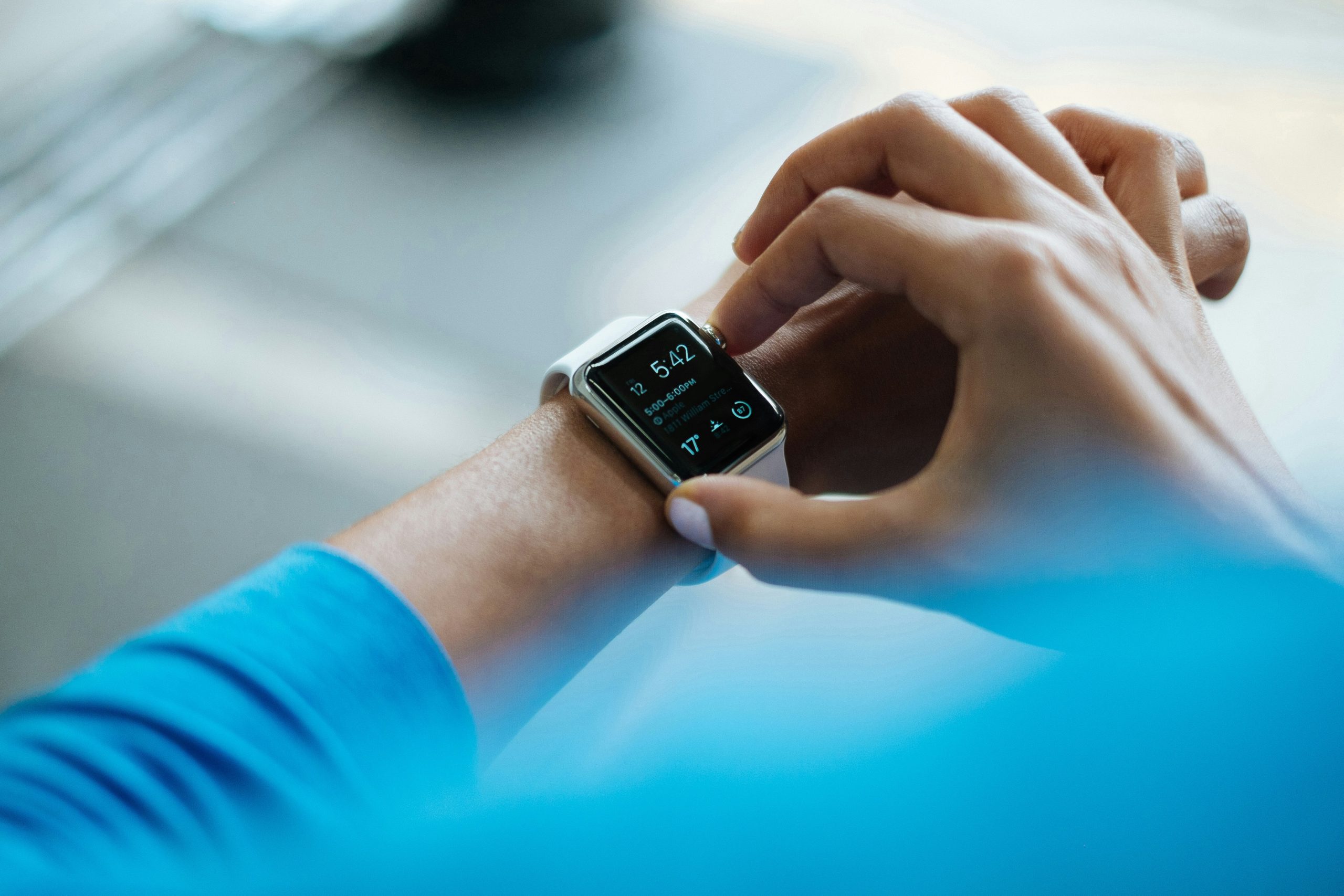As the field of mental healthcare has recently underscored a need for prevention to proactively detect and reduce risks for mental health issues, it has been a challenge to find ways to implement this in practical ways. Public health practitioners also emphasize the need for preventative mental health care on a systemic level alongside retroactive treatments1. Even as it relates to physical health issues, it can be considerably difficult to catch onto the signs of changing or decreased wellbeing before they become a clinically significant issue, requiring treatment. In light of this, the subspecialty of preventive psychiatry has grown in popularity, however the potential of this growing field can be limited in less resourced settings and by barriers to consistent care2. Therefore, innovative technology, such as wearable devices and digital platforms, can be a helpful accessory to facilitate early detection and prevention. This article will spotlight some examples and how they might work to reshape how we understand and intervene in the onset of mental health issues.
How does this fill a gap in care?
Traditional methods of diagnosis and treatment rely heavily on self-reported symptoms and clinical assessments, which may not always provide a comprehensive understanding of an individual’s mental health status. These are most often used, despite the social desirability bias or memory effects they might introduce, since they are cheap, quick measurements that fit well to the constraints of clinical settings3. Wearable technology, equipped with advanced sensors and artificial intelligence (AI), offers an innovative approach to tracking physiological and behavioral indicators, enabling timely interventions and improved patient outcomes. While the term wearable technology might conjure images of clunky headsets or devices that may be harder to adopt into daily use, there is a move towards developing smaller, convenient, and affordable technology.
Types of wearable technology leveraged for mental healthcare
Smartwatches and Fitness Trackers
Devices like the Apple Watch, Fitbit, and Garmin track physiological markers such as heart rate variability (HRV), respiratory rate, sleep patterns, and physical activity, which are crucial indicators of mental well-being. A patient and their provider might be able to work through reports from these devices to better understand what induces changes in physiological stress indicators or circadian rhythm. Some models offer stress monitoring features based on HRV and respiration rates, although stronger research is needed to validate the mirroring of these indicators to fluctuating stress4.
Electroencephalogram (EEG) Headsets
EEG-based wearables, such as Muse and Emotiv, measure brainwave activity, providing insights into cognitive states such as stress, focus, and relaxation5. For those who may not be as familiar with EEG technology, they provide the user the ability to display the frequencies of the brain’s electrical activity, where different frequency patterns may serve as biomarkers of different health conditions6. This might allow for greater patient psychoeducation as the situations that produce high levels of anxiety, or conversely high levels of focus, can be associated with their neural responses in real time.
These devices are used in neurofeedback therapy to enhance mindfulness and cognitive training amid a controlled exposure to a potentially stressful stimulus. Not only can this wearable technology be used for prevention and detection, it can also be used for the sake of stress reduction and building cognitive flexibility throughout the treatment timeline7. These devices also innovate methods used by researchers to study the brain, since they can be more portable and easier for participants to independently use.
Smart Rings and Biosensors
The Oura Ring and similar devices track sleep quality, heart rate, and temperature to assess mental health and physiological indicators. Since poor sleep hygiene can be both a major predictor and outcome of declining mental health, tracking this can be a useful warning to users to take action around their mental health early on9. Read more about the effects of poor sleep on wellbeing in a recent blog article. Sweat sensors can analyze biochemical markers like cortisol levels, which can reflect changes to stress and anxiety9.
Virtual Reality (VR) Headsets
VR-based wearables, such as Oculus and HTC Vive, are employed in exposure therapy and mindfulness training for anxiety and PTSD treatment. This can effectively prevent the worsening of certain disorders by providing immersive environments that aid relaxation and cognitive restructuring10. More information about the use of VR in mental health treatments can be found here.
How is wearable technology uniquely beneficial for mental health?
Continuous data collection helps identify patterns and triggers, allowing for early intervention before mental health conditions worsen. Further, it makes it easier for providers to tailor precise, personalized treatment plans. AI-driven analytics from wearable technology devices can provide insights for mental health interventions based on individual needs, patterns, and responses. Wearable technology also pays dividends to the aim of patient engagement with protecting their mental health. Gamification and real-time feedback encourage users to be more mindful of their mental state. The capacity for remote monitoring and telehealth integration is another advantage conferred by wearables. They have the potential to facilitate remote consultations, risk assessment, and monitoring, reducing barriers to mental healthcare access, especially in rural or low-resource environments.
What might be some challenges and ethics considerations with wearable technology in this field?
As with any digital health tool, data privacy and security is a significant ethical consideration. Protecting sensitive health data from breaches and ensuring user confidentiality is a major concern, especially when building trust among new users. Accuracy and reliability are also key issues. Variability in sensor precision and data interpretation can impact the effectiveness of these technologies. Long-term adherence to wearable technology usage remains a challenge due to comfort, cost, and perceived benefits. Issues such as informed consent, potential misuse of data, and the psychological impact of continuous monitoring also need to be addressed when incorporating wearable technology for the aim of prevention.
Sources
-
https://pmc.ncbi.nlm.nih.gov/articles/PMC9360426/
-
https://doi.org/10.1097/01.nmd.0000152810.76190.a6
-
https://pmc.ncbi.nlm.nih.gov/articles/PMC3692579/#:~:text=Mental%20health%20care%20has%20historically,drug%20levels
-
https://pmc.ncbi.nlm.nih.gov/articles/PMC9494213/#:~:text=Monitoring%20of%20stress%20using%20these,such%20as%20the%20Apple%20Watch.
-
https://pmc.ncbi.nlm.nih.gov/articles/PMC11048695/
-
https://doi.org/10.1016/j.cogr.2021.07.001
-
https://pmc.ncbi.nlm.nih.gov/articles/PMC10927393/
-
https://www.sciencedirect.com/science/article/pii/S1389945724000200#:~:text=The%20Oura%20Ring%20uses%20a,information%20about%20sleep%20and%20wakefulness.
-
https://www.sciencedirect.com/science/article/pii/S2772632023000053#:~:text=Stress%20is%20mostly%20positively%20related,cortisol%20levels%20in%20the%20saliva.
-
https://pmc.ncbi.nlm.nih.gov/articles/PMC6823515/#:~:text=Incorporating%20VR%20in%20therapy%20can%20increase%20the,patients%20than%20in%20vivo%20or%20imaginal%20exposure.







